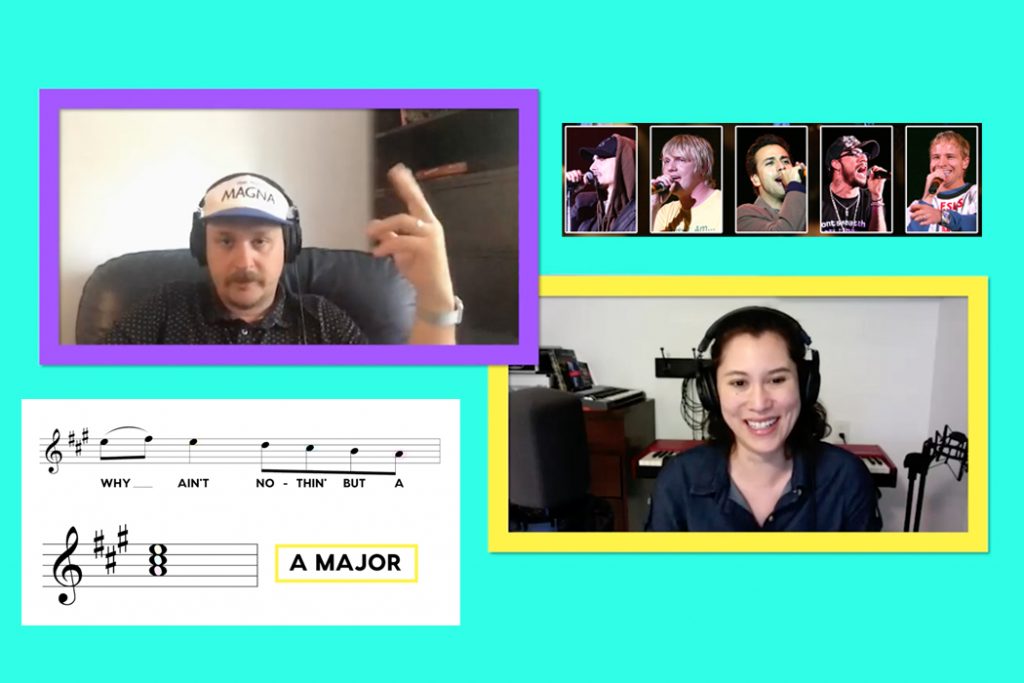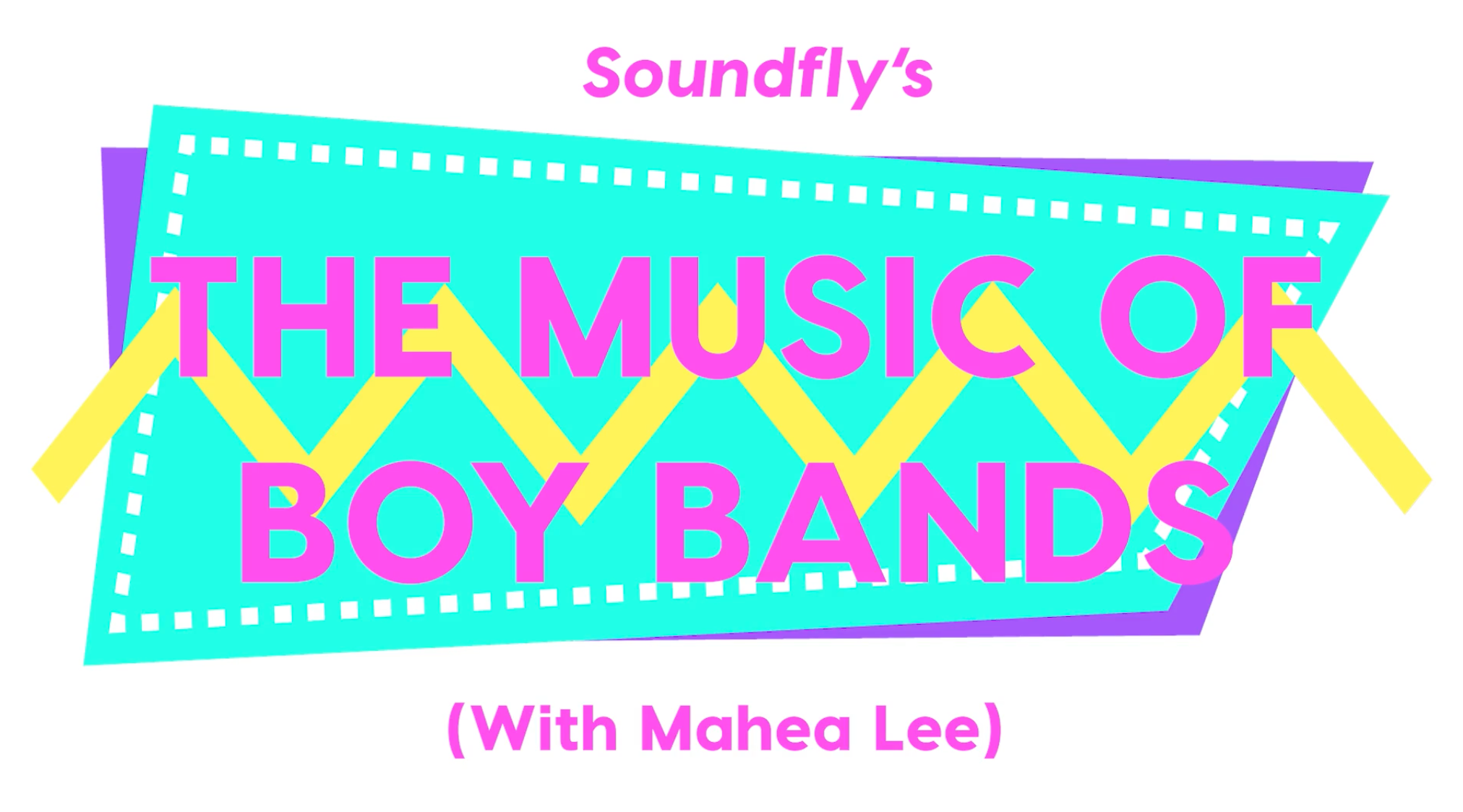+ This lesson is shared courtesy of Soundfly’s course The Music of Boy Bands. For access to this course plus hundreds more in-depth videos and tutorials, subscribe to Soundfly.
Since Backstreet Boys’ “I Want It That Way” is the boy band-iest song of all time, let’s see what it can teach us about harmony.
First, let’s listen!
For this lesson, I had the chance to sit down with friend from college (and spouse), Carter Lee, who is a seasoned performer, harmonic theory afficionado, and the host of the podcast, Themes and Variation. Harmony’s a pretty big part of our relationship, so I was pretty sure he’d have a lot to say about the chord choices in this song.
Download the chord chart below if you’d like to follow along.
Download: I Want It That Way Chord Chart
The Key of the Song
“I Want It That Way” is in A major, but the verses hint at the relative minor key by emphasizing that F# minor chord. Don’t forget: when it comes to analyzing harmony, especially in pop music, it’s always important to think about context.
Subtle Harmonic Variation
As you know, small tweaks in a chord progression can add a lot of interest and advance the story of the song. Repetition is a big part of pop music, but subtle variety can be important as well. For example, there are two incredibly similar, yet distinct moments in this song: the end of the first and second verses.
At the end of the first verse, the song hits an E chord followed by an A chord and then jumps back to the F# minor to start the next verse. At the end of the second verse, the song hits those same E and A chords, but then the chorus starts on a D(add9) chord instead.

Even though D (add9) and F# minor share a lot of notes, the difference in roots impacts the balance of tension and release in each case.
Here’s the first version:
And here’s the second:
Relating Harmony to Melody
Another interesting part of this song is how the notes in the melody relate to the chords supporting them. In the chorus, the melodic notes walking down the scale add tensions to the D chord underneath them, hinting at a more complex harmony; like 9ths, 7ths, and 13ths. The use of triads in particular allow for plenty of tension between the melody and the chords, without excessive muddiness.
This is something you can play with as a writer. The melodic notes are as much part of the harmony as the notes in the chords supporting them, and the most interesting chord choice may not be the one that works most obviously with the melody.
Simply adjusting the root of a chord can turn a hum-drum moment into one that’s full of interesting harmonic tensions.
The Modulation
“I Want It That Way” features an incredibly noticeable whole step modulation that happens as the bridge moves into the final set of choruses. This move heightens the drama at the end of the song. It may sound cheesy to some, but it actually happens pretty smoothly, as we mention in the video above.
This sort of modulation is actually fairly common in many popular styles of music, especially musical theater. It’s also pretty typical to see a modulation up a half step or a fifth, rather than the whole step they use here. For a pretty epic example, listen to the end of Beyoncé’s “Love on Top” where they modulate up a half step four times in a row.
When the modulation happens here, they repeat the exact same material, only up a step. You don’t have to do that, but it’s fairly common. Also, the use of triads, rather than more complex extended chords, makes this transition smoother.
4-3 Suspension Resolving Two Ways
The move from a suspended chord to a parallel triad is a really great way to create a feeling of delayed resolution. The parallel triad is the chord with the same root note as the sus chord, such as Csus to C. As a listener, that extra bit of uncertainty helps build expectations.
In “I Want It That Way,” writers Max Martin and Andreas Carlsson do something interesting here during the bridge. They use the 4-3 suspension twice. The first time, leading into the bridge, the suspended chord and parallel triad resolve to a chord a fifth below them, which is the sort of V to I motion we expect. The second time, leading out of the bridge, they don’t.
Here’s the first time, when we get the delayed resolution through the use of the sus chord before moving to the F# minor as our ears expect. This feels like normal V-I movement, with a touch of extra drama from the suspended chord:
And here’s the second time, in which the second chord moves down a whole step instead of resolving down a fifth:
Final Thoughts
Toward the end of our conversation, we reached a solid conclusion: on a harmonic level, “I Want It That Way” really holds up. Though the chords it uses aren’t particularly complex and the progressions are diatonic, Max Martin and Andreas Carlsson found lots of ways to divert our expectations just enough to keep things interesting from start to finish.
Don’t Stop Here!
Keep learning about The Music of Boy Bands with Soundfly’s premium course, taught by composer and music analyst Mahea Lee. This quirky short course is a digestible deep-dive that is at once both fun and factual, whimsical and analytical, and chock full of useful tips that any pop-oriented songwriter or producer can immediately put to use. In it, we’ll break down how the various elements such as lyrics, melody, chords, production, and arrangement come together to produce a style of music that can be as surprising as it is familiar. And we’ll look to the song banks of *NSYNC, One Direction, and Backstreet Boys for inspiration to help us improve our own songwriting and production skills.
Join The Music of Boy Bands today, and start learning how to turn your childhood pop obsession into actionable songwriting and production skills!





